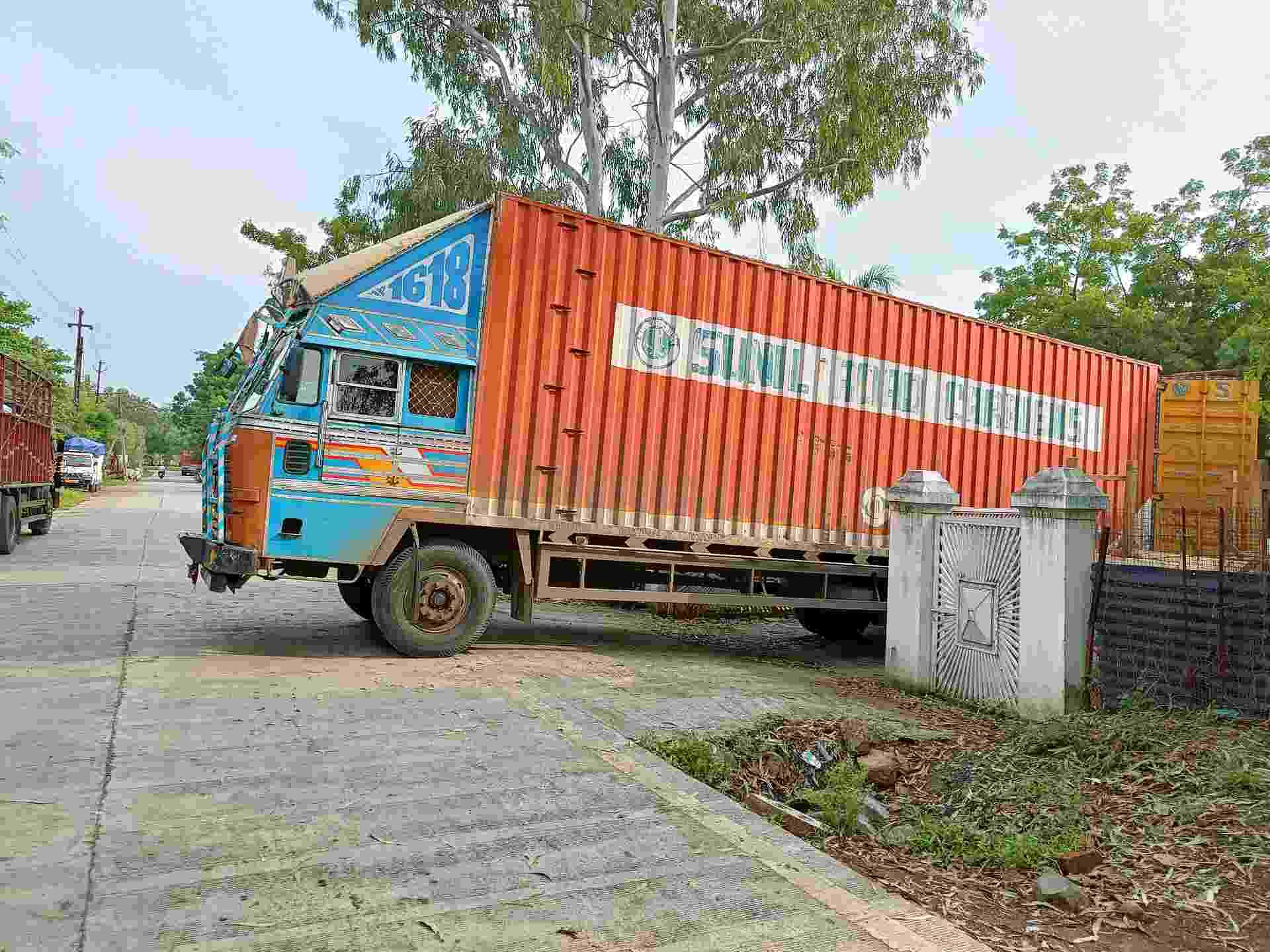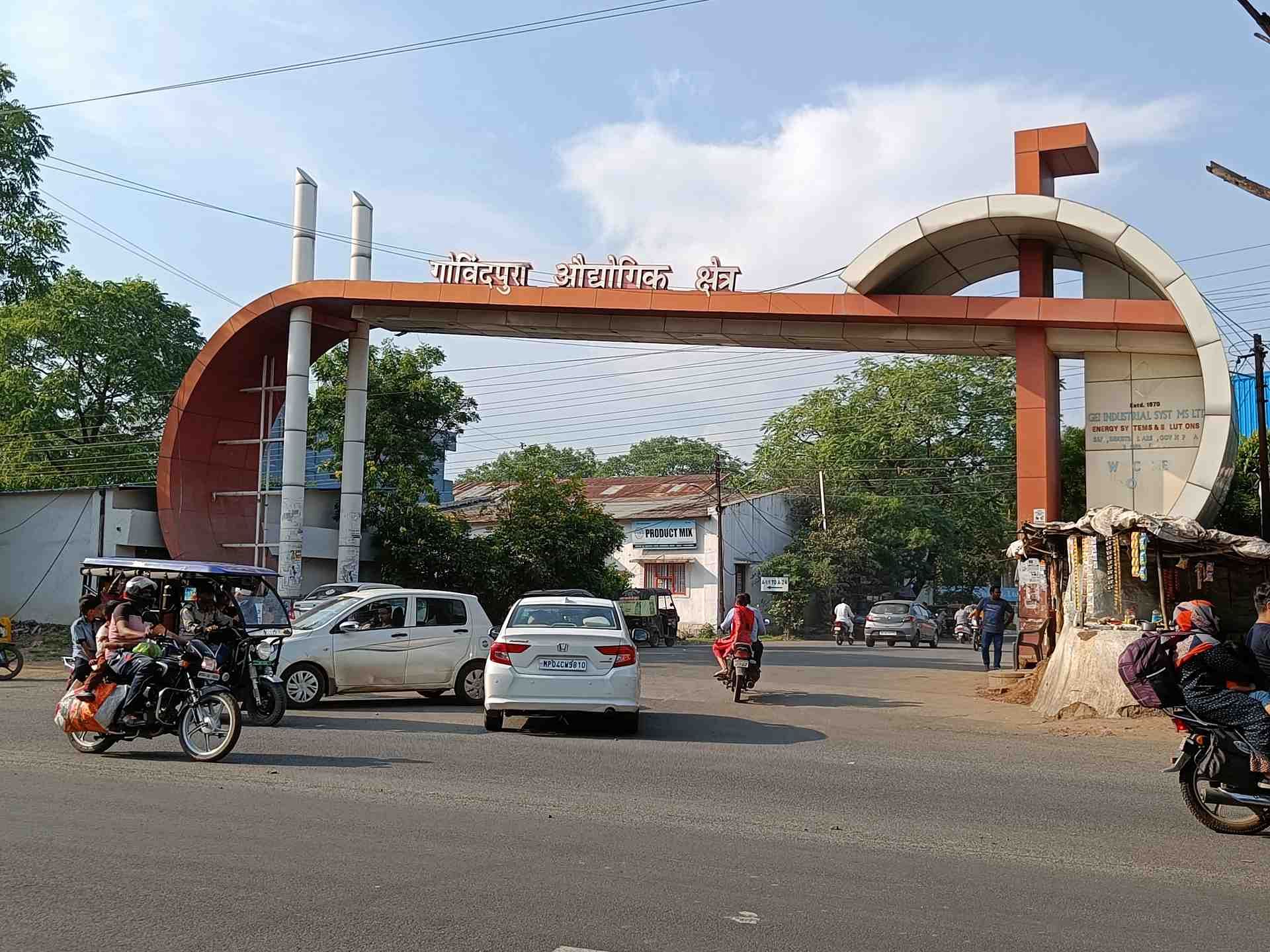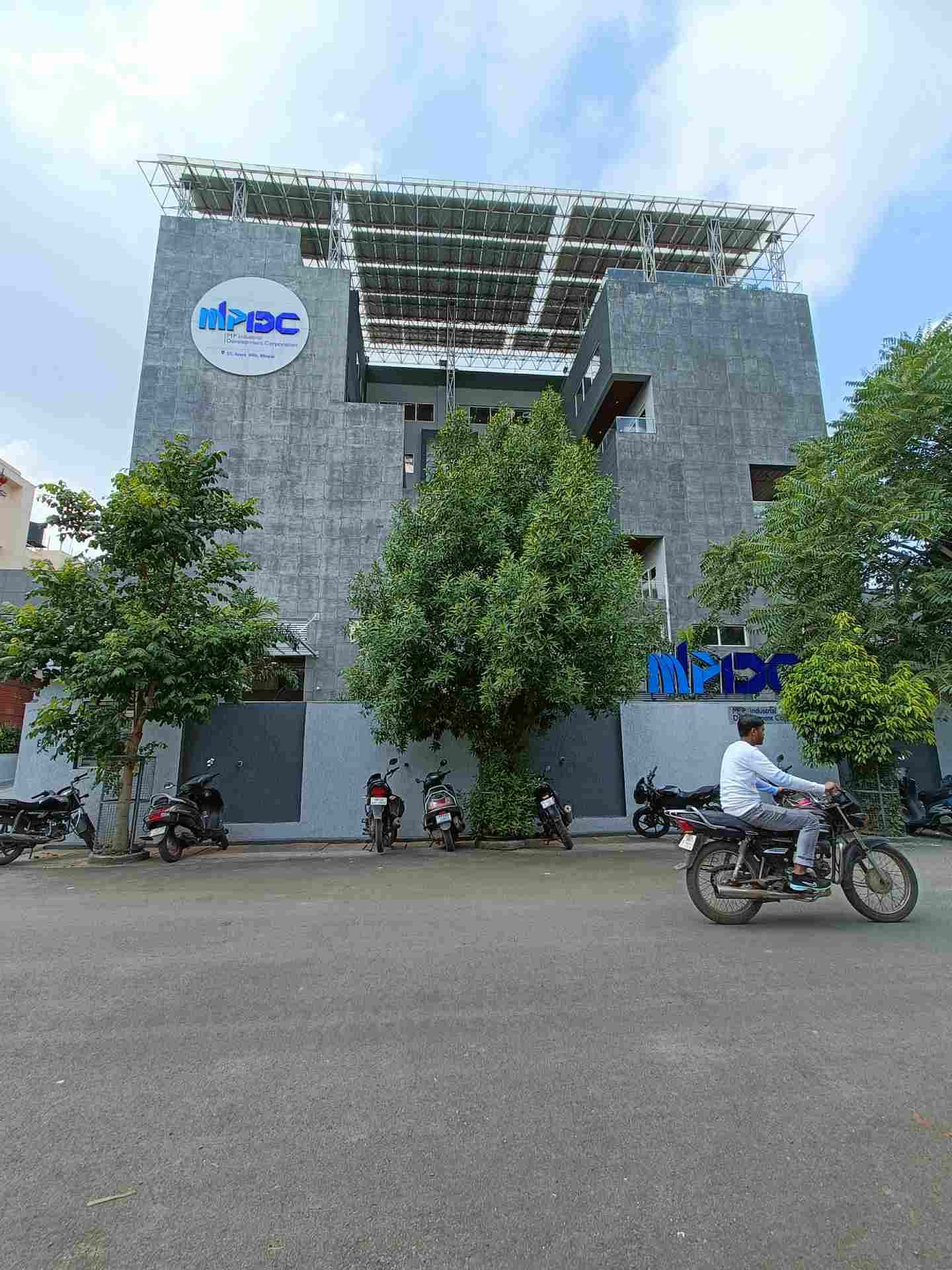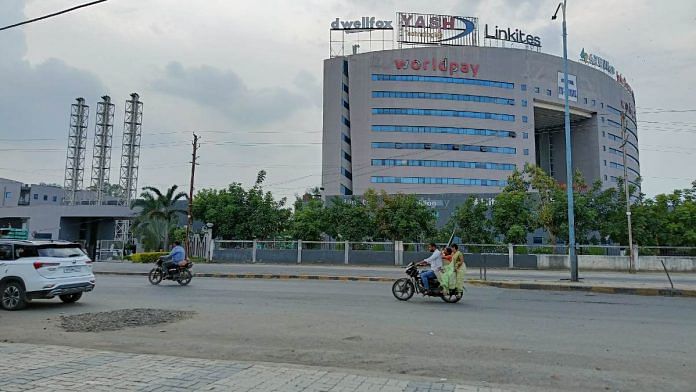Bhopal/Mandideep/Indore/Dewas: Bhopal resident Rakesh Kumar, 38, has only good things to say about Mandideep, one of the largest industrial areas in poll-bound Madhya Pradesh.
“Mandideep is a good place to work and big companies work here, which is why it has emerged as a big town in the last few decades,” said Kumar, who has been travelling about 20 km (one way) daily for the past 12 years to work here.
Located in Raisen district, Mandideep is a bustling industry hub that is part of the state’s efforts to boost the sector in Madhya Pradesh, where agriculture remains the chief contributor to the economy.
Narendra Kumar, the treasurer of the Mandideep Industrial Association, said more than 450 small and big industries operate from the area.
“Everything from needles to big vehicles is manufactured here, and it accounts for annual exports of about Rs 25,000 crore,” he added, emphasising how Mandideep provides employment to the youth of the state.
There are other industrial areas in the state as well — Pithampur, Govindpura and Dewas, the latter two now described as being a shadow of their former self — and the four together contribute about 80 percent to the industrial economy of the state.

Encouraging industry is a stated objective of the Madhya Pradesh government, and there have been some promising outcomes.
The total exports from the state went from nearly Rs 6,000 crore in 2003-04 to Rs 65,000 crore in 2022-23, according to data from the MP industries department.
Apart from the Pithampur Special Economic Zone (SEZ), MP has 4 IT SEZs in Indore — the Crystal IT Park and three private-operated ones, Infosys, TCS and Impetus.
According to the MP economic survey 2022-23 the size of the secondary sector (manufacturing, construction, creation of utilities etc) was expected to increase by 5.42 percent between 2021-22 and 2022-23.
“The economy of the state is agriculture-oriented, for which industrialisation is absolutely necessary to take it to a higher level of development. Micro and small and medium industries have a special role in the development of the rural economy,” the survey said.
Even so, industry’s contribution to the state’s economy remains low, and has in fact fallen over the past decade.
Industry contributed 27 percent to the state’s GDP in 2011-12, with the figure dropping to 19 percent in 2021-22. At the same time, the contribution of agriculture was about 48 percent in 2021-22.

Between 2011-12 and 2021-22, manufacturing registered a growth of 6.22 percent, which is less than in its neighbours Gujarat (10.8 percent), Chhattisgarh (7.05 percent), Rajasthan (6.97 percent), and Uttar Pradesh (6.37 percent).
Only Maharashtra recorded a lower growth (3.32 percent).
While the government cites MSME growth among its achievements, a study by the state government think tank Atal Bihari Vajpayee Institute of Good Governance and Policy Analysis (AIGGPA) — in collaboration with the state MSME department — itself said this year that the state’s MSMEs are facing financial issues. “Limited access to finance is a significant hindrance to the growth of MSMEs,” it reads.
Industry experts acknowledge the gains made in the sector but say the government has not acted with enough alacrity to optimise the state’s potential, also attributing these trends to what they describe as the administration’s continued focus on agriculture.
Industrialists also told ThePrint that government policies have not brought any major change in the industry of the state.
However, the government denies this, with officials of the state industry department saying it has tried to ease the policy framework — from licensing to land acquisition — in the interest of business.
“From the licensing system to the availability of land for industrialists, we ease the whole process,” said a senior department official. “Government understands agriculture provides a big chunk in state GDP but industry is also important from the view of employment.”
Another official said the “industrial scenario in MP has undergone a sea change in the last two decades following industry-friendly policy initiatives making business ventures hassle free”.
“The industrial growth rate is 24 percent, which was 0.61 percent in 2001-02,” the official added.
Experts say MP’s location in central India offers a great potential to make a further push for the sector.
A key focus area needs to be decentralisation, they add, pointing out that much of the industry is concentrated in a few clusters while the vast majority of the state remains untouched by its gains.
Also Read: Like it or not, future of Indian economy will have to be built on services, not manufacturing
‘Regional disparities’
After Rajasthan, Madhya Pradesh is the second largest state in India, and boasts of much diversity. Even so, according to the information received from the industries department of Madhya Pradesh, the industrial areas in and around Bhopal and Indore drive 80 percent of industrial development in the state.
Gwalior, Jabalpur and Rewa are among the other industrial pockets.
“Regional disparities are the reason for the slow industrialisation in the state,” said Alka Arora, a professor in the economics department of the Indore-based Atal Bihari Vajpayee Arts and Commerce College, and an expert in industrial economics.
“Madhya Pradesh has been dependent on an agriculture-based economy since the beginning. Due to limited connectivity and basic infrastructure in some areas, industries are also limited to some areas only,” she added.
Govindpura and Dewas are among the state’s oldest industrial hubs but are said to face many challenges.

Dewas, located 40 kilometers from Indore, is one of the largest industrial areas of the state. Govindpura Industrial Area, located in the heart of Bhopal city, is older, but smaller.
Dewas is divided into six industrial areas, with around 1,200 small and big industries working here.
Dewas’ origin as an industry hotspot can be traced back to 1969, when the Union Finance Ministry started the bank note press here. Many industries followed, but the growth has slowed over the years.
According to a profile of Dewas prepared by the Union Ministry of MSME, “rapid industrialisation took place in the late 70s and early 80s, but due to inadequate infrastructure, the pace has been slower since the late 80s”.
“There are still large companies delivering substantial profits however,” it adds.
Dewas Industrial Association president Ashok Khandelia said industrial growth here “started around 1975, after which companies like Tata, Cummins, Sun Pharma, John Beer, Gajra Gear, Gabriel established their set-up here”.
Gradually, he added, private land became expensive and the government did not acquire land for industries in Dewas.
“At present, the biggest challenge facing Dewas is the non-availability of land for industries. Now there is no land left here, hence industries are not able to develop and expand,” he added.
MP has a land bank of more than 1.2 lakh acres across the state, Chief Minister Shivraj Singh Chouhan told potential investors last year. But experts told ThePrint that these lands are in backward areas, very far from the major cities.
“Other places do not attract investors like Indore-Bhopal. And other places are not as well connected and the infrastructure is also not that good,” said Gautam Kothari, president of Pithampur Industrial Association.
Pithampur is the largest industrial area of Madhya Pradesh, where more than 1,250 industries currently operate.
Like Mandideep, employees at the Pithampur industrial area commute daily to and from Indore, located 30 km away.
“I have worked here for the past one decade and seen the growth of this area as MP’s industrial hub,” said an employee who works with Dabur on the condition of anonymity.
“Small businesses like tea shops and restaurants have opened here, which give employment to hundreds of people. And the proximity to Indore attracts people to work here,” he added.
Indore is the only city in India that has both IIT and IIM, and has dozens of engineering colleges. It has also topped the list of India’s cleanest cities for two years in a row.
“Due to these big institutions and the easy connectivity with Delhi and Mumbai, Indore became a industry hub of MP, but this needs to be changed because, for the overall industrial growth of the state, decentralisation of industries is very important,” said Khandelia, adding that industrialisation also leads to the development of a city.
“The industries here are the major reason behind the development that has taken place in Dewas,” he said.
Kothari, however, noted that even the existing industrial areas were not doing so well. “Go there and see what their condition is,” he said. “Creating an industrial area on the map does not change the ground situation.”
Complaints have also arisen from Govindpura, which emerged after the setting up of BHEL in Bhopal around 1960 brought in a large number of small companies.
“At that time, the government did not work for the acquisition of land and allowed cities to be established around it, due to which now there is no land left here and the industries here are running with limited resources,” said N.L. Gupta, secretary of Govindpura Industrial Association.
“Madhya Pradesh is a very unfortunate state,” he added. “Big companies do not want to come here. And without big companies, small companies cannot grow.”
Dewas Industries Association vice-president Amarjeet Singh Khanuja said another problem is that different policies are made at many levels, which adds to confusion.
Industries in the state are monitored at many levels, like the District Industrial Centre (DIC), MP Industrial Development Corporation (MPIDC), and MSME department.
“Both small and big companies operate in an industrial area, but different departments are working to make policies for those companies, which creates a lack of coordination,” he said, citing Dewas as an example, where he said the Industrial Area 1 comes under DIC while 2 and 3 come under MPIDC.

Narendra Kumar, head of NVN Industries in Mandideep, said the “state’s policies are not good for industries”.
“Easy connectivity and accessibility of labour are among the biggest challenges for MP industries. The industrialists do not get the same help that is provided to farmers, from cheap loans to electricity subsidies,” he added.
“The government says there is a single-window system but once you enter that window, many more windows start appearing. At the policy level, small industries have to face many challenges which affect their growth,” said N.L. Gupta of Govindpura.
Policies for industry
Over the years, the state has taken steps to ease the investment atmosphere in MP.
Pankaj Dubey, joint director of MP’s MSME department, said the state industries, majorly the MSME sector, had grown rapidly in the past few years.
“The state government policy of not taking any tax for the initial three years helped them,” he added.
MP has over 9 lakh registered MSMEs.
The state government says it has invested approximately $15.4 billion in support infrastructure in the last five years, with the goal of making the state an industrial hub.
As stated before, the government also says it has simplified the licensing framework for new industries and introduced a single-window system, even as it acknowledges that gaps remain.
“Dewas is one of the oldest industrial areas and once the industrial hub of the state but, over the course of time, land availability becomes a challenge for the industries that slows down the pace of growth,” said an official of the Dewas DIC.
“But the Malwa region is very productive in terms of industry. Pithampur has become a focal point of investors in the last one decade and it is not very far from Dewas,” he added.
MP Industrial Development Corporation managing director Navneet Kothari said industrial relations in the state are cordial, and maintaining a cordial atmosphere has been the work of the government across party lines.
“We have ample land in the state which is the biggest advantage for MP because many states are facing land unavailability issues. But an industrial ecosystem has been created in areas like Pithampur, which is near Indore, and investors coming to Madhya Pradesh want to set up their industries there,” he added.
“There is a limit to agricultural growth and MP is rapidly reaching that limit,” Navneet Kothari said. “But there are no limits in the industry and there are a lot of possibilities. We also have no dearth of talent pool.”
While Madhya Pradesh has also organised Global Investor Summits several times in the last decade to attract industries — PM Narendra Modi gave the state the slogan “MP ajab hai, gajab hai, sajag hai (MP is unique, wondrous and aware)” — they don’t enthuse local businesses much.
Gautam Kothari of Pithampur Industrial Association said when “Digvijaya Singh (Congress) was CM, he organised a summit in Khajuraho but very little investment came”.
“Local industries are not given importance in the Global Investor Summit. It’s just a big tableau where only big industrialists get attention,” he added.
Ankur Gupta, owner of Capri Pants Pvt Ltd in Govindpura Industrial Area, said “these events just show a larger-than-life picture”.
‘Neighbours far ahead’
Economic experts say a lot of factors play into industry not finding the requisite scope to grow in MP.
“Most of the population of Madhya Pradesh lives in rural areas where the condition of infrastructure is not good. Industries do not want to go to areas where there is nothing,” said Biswajit Patra, assistant professor in the Department of Economic Sciences at Indian Institutes of Science Education and Research (IISER) Bhopal.
However, he added, the Madhya Pradesh government has definitely taken steps towards expanding industries in the state. “Madhya Pradesh lies in the centre of the country from where one can easily reach many states and, keeping this in mind, attention is being given to industries,” he said.
In the last few years, said Prof Arora, the government has tried to promote industries, “but these efforts have been delayed”.
“The neighbouring states of Madhya Pradesh have gone far ahead in this matter,” she added.

Speaking about the low contribution of industrial areas in Gwalior, Jabalpur and Rewa, she said, “These are mineral-based districts where mineral-based industry should be set up but there is a lack of industry there.”
However, she admitted that one big drawback was that Madhya Pradesh is landlocked.
“It is a well-known fact that there is always more potential for growth of industries in coastal areas. But Madhya Pradesh has a huge advantage in being in the centre of the country and it holds great importance due to its location and for this reason it can attract investment,” she added.
(Edited by Sunanda Ranjan)
Also Read: Modi can’t prove India is 5th largest economy. Data will fail him



